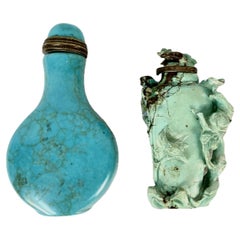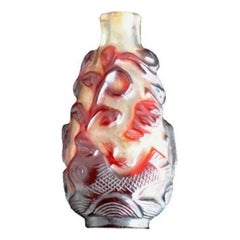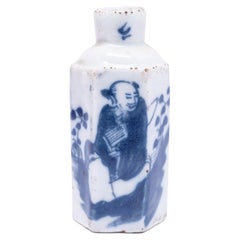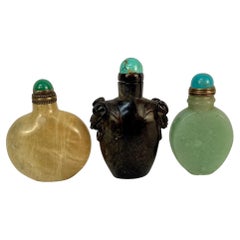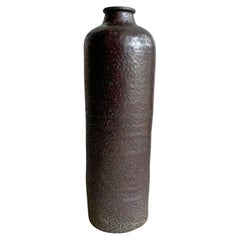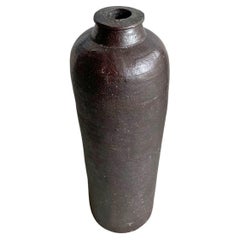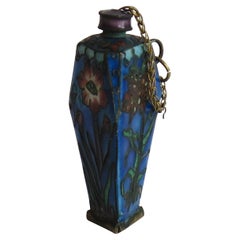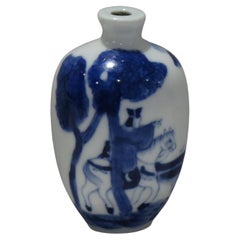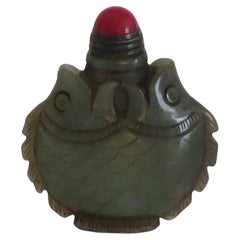Antique Chinese Bottles
19th Century Chinese Chinese Export Antique Chinese Bottles
Other
19th Century Antique Chinese Bottles
Glass
Early 20th Century Chinese Qing Antique Chinese Bottles
Porcelain
19th Century Chinese Chinese Export Antique Chinese Bottles
Other
19th Century Chinese Qing Antique Chinese Bottles
Ceramic
19th Century Chinese Qing Antique Chinese Bottles
Ceramic
19th Century Chinese Qing Antique Chinese Bottles
Bronze
Mid-19th Century Chinese Chinese Export Antique Chinese Bottles
Porcelain
Early 20th Century Chinese Qing Antique Chinese Bottles
Serpentine, Bronze
Early 20th Century French Chinese Export Antique Chinese Bottles
Agate
19th Century Chinese Qing Antique Chinese Bottles
Glass
1890s Chinese Antique Chinese Bottles
Silver
Late 19th Century Chinese Chinese Export Antique Chinese Bottles
Jade
Mid-19th Century Chinese Antique Chinese Bottles
Metal
Early 18th Century Chinese Qing Antique Chinese Bottles
Porcelain
Late 19th Century Chinese Chinese Export Antique Chinese Bottles
Porcelain
19th Century Chinese Qing Antique Chinese Bottles
Metal, Enamel
Early 20th Century Chinese Qing Antique Chinese Bottles
Ceramic
19th Century Chinese Qing Antique Chinese Bottles
Ceramic
16th Century Chinese Ming Antique Chinese Bottles
Multi-gemstone, Brass
15th Century and Earlier Chinese Han Antique Chinese Bottles
Bronze
15th Century and Earlier Chinese Antique Chinese Bottles
Bronze
Early 20th Century Chinese Qing Antique Chinese Bottles
Porcelain
1890s Chinese Qing Antique Chinese Bottles
Wood
Early 20th Century Chinese Art Deco Antique Chinese Bottles
Glass
19th Century Chinese Qing Antique Chinese Bottles
Agate
19th Century Chinese Qing Antique Chinese Bottles
Jade
19th Century Chinese Qing Antique Chinese Bottles
Burl
19th Century Chinese Qing Antique Chinese Bottles
Agate
19th Century Chinese Qing Antique Chinese Bottles
Agate, Tourmaline
Early 19th Century Chinese Qing Antique Chinese Bottles
Organic Material
Late 19th Century Chinese Qing Antique Chinese Bottles
Agate
Late 19th Century Chinese Qing Antique Chinese Bottles
Agate
15th Century and Earlier Chinese Other Antique Chinese Bottles
Ceramic, Celadon
16th Century Chinese Ming Antique Chinese Bottles
Earthenware
Mid-19th Century Chinese Baroque Antique Chinese Bottles
Porcelain
Late 18th Century Chinese Antique Chinese Bottles
Porcelain
Late 19th Century Chinese Qing Antique Chinese Bottles
Organic Material
Late 19th Century Chinese Qing Antique Chinese Bottles
Organic Material
Late 19th Century Chinese Qing Antique Chinese Bottles
Quartz
Late 19th Century Chinese Qing Antique Chinese Bottles
Agate
Late 19th Century Chinese Antique Chinese Bottles
Amethyst
Early 20th Century Chinese Antique Chinese Bottles
Silver
Early 1900s Chinese Chinese Export Antique Chinese Bottles
Silver
16th Century Chinese Ming Antique Chinese Bottles
Earthenware
Early 20th Century Chinese Qing Antique Chinese Bottles
Ceramic
19th Century Chinese Qing Antique Chinese Bottles
Agate
18th Century Chinese Ming Antique Chinese Bottles
Porcelain
16th Century Chinese Ming Antique Chinese Bottles
Earthenware
16th Century Chinese Ming Antique Chinese Bottles
Earthenware
19th Century Chinese Qing Antique Chinese Bottles
Porcelain
16th Century Chinese Ming Antique Chinese Bottles
Earthenware
19th Century Antique Chinese Bottles
Glass
Late 18th Century Chinese Antique Chinese Bottles
Porcelain
Late 18th Century Chinese Antique Chinese Bottles
Porcelain
Late 18th Century Chinese Antique Chinese Bottles
Porcelain
Early 20th Century Chinese Chinese Export Antique Chinese Bottles
Stoneware
- 1
Antique Chinese Bottles For Sale on 1stDibs
How Much are Antique Chinese Bottles?
- What are Chinese snuff bottles?1 Answer1stDibs ExpertApril 5, 2022Chinese snuff bottles are decorative containers originally produced during the Qing Dynasty. Their original purpose was to hold powdered tobacco. However, most people use snuff bottles as decorative objects today. You can find a range of Chinese snuff bottles on 1stDibs.
- What is an antique snuff bottle?1 Answer1stDibs ExpertApril 5, 2022Snuff bottles were used in China in the early 18th century. The bottle contained powdered tobacco, which was illegal to smoke, but was considered a remedy for colds and headaches and was therefore allowed in bottles in powdered form. On 1stDibs, find a collection of authentic snuff bottles from some of the world’s top sellers.
 PAGODA REDOctober 7, 2020
PAGODA REDOctober 7, 2020To determine the age of a Chinese furniture piece, look carefully at the joinery and finish. Natural expansion and contraction of the wood over time will cause a joint to protrude or retract, distorting a once-seamless fit. Antique lacquer finishes become crackled and worn over time. Areas of exposed wood, such as the underside of a table, the footrest of a chair, or the back of a cabinet should appear raw and dry compared to the finished surface. With use, the legs of tables and chairs become weathered near the bottom from precipitation and use.
 Lotus GallerySeptember 23, 2020
Lotus GallerySeptember 23, 2020The best way to know is to take it to an expert, such as an appraiser, reputable dealer or auction house, or museum
- 1stDibs ExpertNovember 4, 2024To identify antique Chinese furniture, look carefully at its details. Chinese craftsmen often built furniture using mortise and tenon joinery, eliminating the need for nails and screws. If you see this type of hardware, your piece is likely not at least 100 years old, especially if the hardware still looks new and shiny. Since antique furniture was handmade, you will normally see slight imperfections, such as tool marks or slight variations in carvings. Pieces that appear completely uniform and pristine are less often genuine antiques.
When present, maker's marks can also be helpful. Research the marks to learn more about when the maker was active and producing pieces like yours. Alternatively, you can have a certified appraiser or experienced antique dealer evaluate your furniture for you.
Shop an assortment of antique Chinese furniture.
